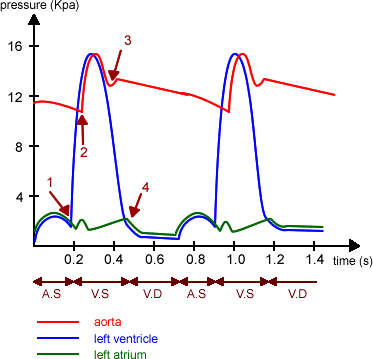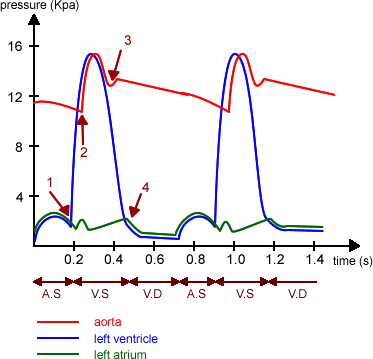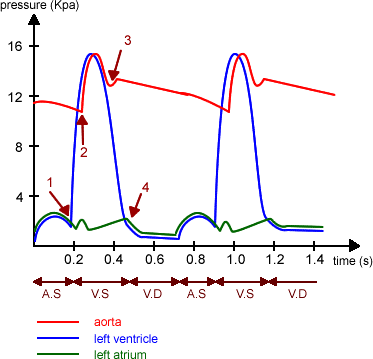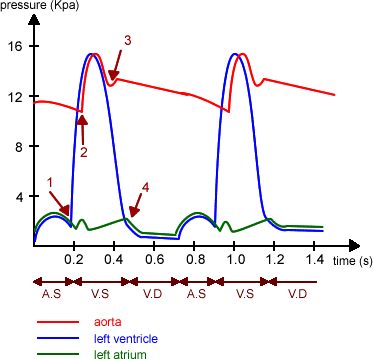FREE Heart Beat Reading Question and Answers
What does 1 indicate?

Explanation:
These valves close during ventricular systole because the atrial wall is pushed against by the pressure from the contracting ventricle, which causes the valve to close. caused when the AV valves close during ventricular systole, causing blood becoming turbulent.
What transpires throughout diastole?
Explanation:
What transpires throughout diastole? The portion of the cardiac cycle known as diastole includes ventricular relaxation, passive and active blood filling, and the time shortly before ejection. Aortic and pulmonary valve closure signals the start of diastole.
How does atrial systole occur?
Explanation:
As the ventricle does not completely relax during its diastole, atrial contraction contributes a minor fraction more to ventricular filling. However, this contribution becomes significant in left ventricular hypertrophy, or thickening of the heart wall. loss of heart's regular electrical conduction, as in atrial fibrillation and atrial flutter.
What takes place throughout ventricular systole?
Explanation:
The absence of ventricular contractions is known as asystole (note: this is in the context of a lethal heart arrhythmia, not an induced asystole on a cooled patient on a heart-lung machine and general anesthesia, during surgery necessitating stopping the heart). The most deadly type of cardiac arrest, asystole is typically irreversible.
Semilunar valve closing

Explanation:
The term "atrial systole" refers to the time when the atrioventricular valves are open. The atrioventricular valves reopen following each ventricular contraction, enabling blood to flow from the atria into the ventricles. Atrioventricular valve opening, also known as diastole, is this action.
What does 1 indicate?

Explanation:
The semilunar valves close when the ventricles relax because the pressure reduces, producing the second heart sound (abbreviated P2). The junction of the aorta and the ventricle is where the aortic valve is found. Blood can flow from the ventricle to the aorta in one direction when the ventricle contracts, opening the aortic semilunar valve.
What does 1 indicate?

Explanation:
The left ventricle is separated from the aorta's entrance by the aortic semilunar valve. The aortic and pulmonary valves, which divide the ventricles from the aorta and pulmonary artery, respectively, are semilunar valves. The valves open and close as a result of variations in the partial pressure gradient that occur during systole and diastole.